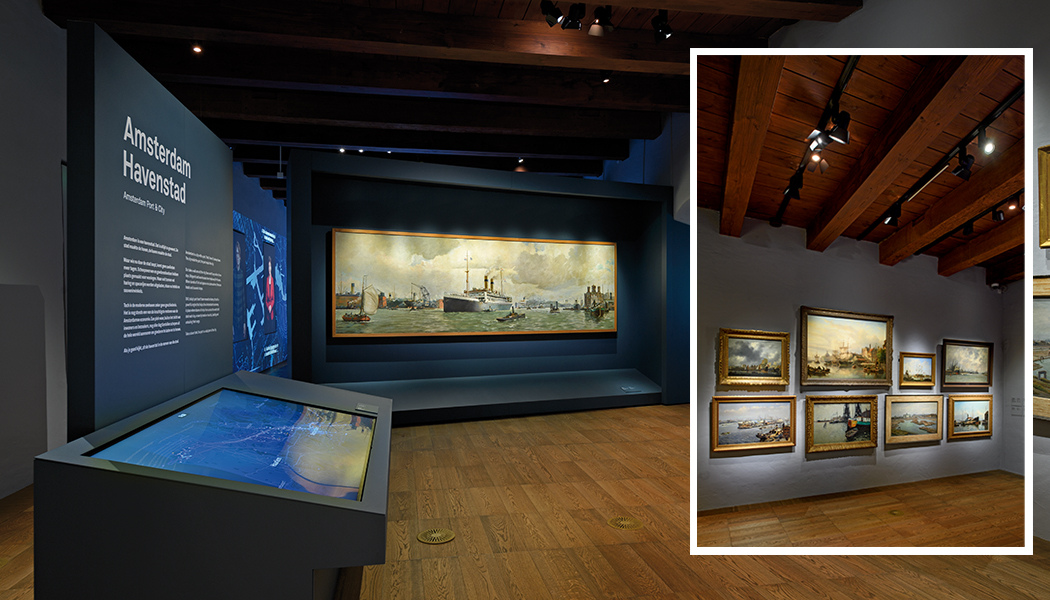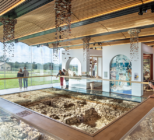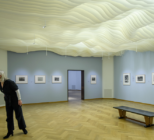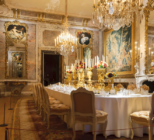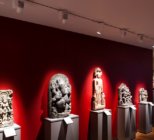The collection of Amsterdam’s Scheepvaartmuseum (National Maritime Museum) is one of the largest and most notable maritime collections in the world. Spanning 500 years of Dutch maritime history, the museum houses around 400,000 objects, including paintings, models of ships, navigation objects and cartography.
The museum has undergone extensive renovations, including a redesign of a lighting system that was nearing the end of its lifespan after 10 years in place. The goal for the new lighting was to showcase both the museum itself, a beautiful, classical building in the heart of Amsterdam, as well as the exhibits within.
Museum management called on Maarten Warmerdam, founder of Studio Warmerdam, to facilitate a new look and feel for the museum by creating a new lighting design.
“I spoke with the directors and asked them what sort of museum they wanted to be in 10 years’ time. Where did they want to go and what sort of lights would accommodate this,” he explained.
“The previous lighting concept was based on experiences, with dynamic light and interactive installations, but the renovation has led to a change in that overall vision by giving the building a more prominent role in the exhibit design, as management now consider the building as one of the highlights of the collection.”
To make the building stand out, the lighting has been carefully designed to be more centred around experiencing the space in combination with the collections, with a particular attention paid towards harmonising the artificial lighting with daylight.
After a European tender process, Warmerdam called on fixtures from Dutch manufacturer CLS, provided by local museum lighting specialists Lichtpunt. A combination of CLS’s Lina Track DF slim, linear rail fixtures fitted with Casambi Bluetooth control; and Jade Zoom directional spots fitted with a local dim control, showcase both the heritage of the building itself, and the artefacts on display.
Lichtpunt also developed a solution specifically tailored to the needs of the project. “What was really good about Lichtpunt is that they came up with a solution where they created special accessories to fit our needs,” Warmerdam added. “They really went into to detail to see how they could meet our needs for the project.”
While Warmerdam was responsible for the wider lighting design of the Scheepvaartmuseum, each individual exhibit has its own specific designer. One of the newly completed spaces, dedicated to the harbour of Amsterdam, was designed by Frank Hulsebosch, Founder of Dutch practice 50Lux. “We specialise in lighting design for exhibitions in museums. I had already done a few exhibitions at the Scheepvaartmuseum, and they asked me to do the lighting for this one too,” he said. Rather than developing a specific concept for the lighting design within the exhibition, Hulsebosch was instead guided by the collection that he was illuminating. “Lighting design is something that you add to the existing design. In the collection, there are pieces that the director wanted to show, and there’s the exhibition itself, and the lighting is something that comes on top of that.
“I had some influence on where the infrastructure was, where the light rails would go, but as it’s an old building from the 1700s, we were limited in where we could put these, as there are big wooden beams in the ceiling every meter. Between the beams, we had one length of rail, so that’s the infrastructure that we had to work with.” Despite these logistical constraints, Hulsebosch was pleased with the outcome of the design, and with the chance to work with CLS in the process.
“I was outside of the specification process, as that was all Maarten’s doing, but I use CLS in a lot of projects. I like them very much, so it would have been my choice anyway. After the choice was made, I was happy – I know them well, I like to work with them; and it was easy for me because I know the instruments and how they work.”
The fixtures from CLS ranged from 3500K to 3000K in colour temperature, with the warmer, 3000K fixtures used to highlight the classic architecture and bring a depth to the wider space. “It fits the history of the building better,” Hulsebosch added. “The floor itself is a very warm colour, so with the warmer light, it shows the colour better. It fits the atmosphere of the whole building, because you see these wooden floors, the wooden beams in the ceiling, and the old windows, so the character of the building is still classic. But the exhibition itself is very modern, which creates a wonderful contrast.

